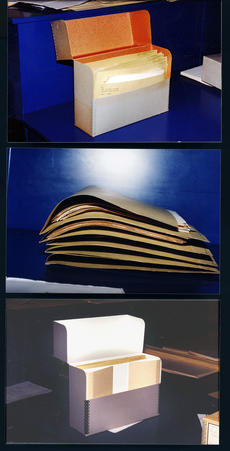Preservation is the systematic application of principles that prolong the life of all collections materials—analog and digital. The Smithsonian Institution Archives has diverse material types, from paper documents, photographs, audio and video recordings, and films, to contemporary holdings such as websites and social media sites. Every staff member at the Archives takes responsibility for preservation of collections, but the Collections Care and Electronic Records programs create and implement policies and standards for the preservation of non-digital and digital collections alike. These standards, as well as helpful outside preservation resources, are outlined below.
Seven basic preservation principles can be applied to home collections, as well as museum, archives, and library collections:
- Preservation Management: Includes policies, assessments, prioritization systems, allocation of resources, and emergency and disaster planning.
- Environmental Control: Includes external temperature and humidity controls, integrated pest management, housing of collections at the shelf, box, and folder level.
- Collections Maintenance: Includes routine preservation actions such as rehousing, and handling, loan, and access policies.
- Reformatting and Duplication: Includes digitization, preservation photocopying, and microfilm.
- Conservation Treatment: Includes documentation, and hands-on treatment of selected artifacts.
- Conservation Research: Includes materials characterization and treatment development.
- Preservation Training: Includes outreach programs, development of bibliographies, and workshops.
Preservation Management
Policies
The Archives follows closely the recommendations set forth in Smithsonian Directive 600 Collection Management Implementation Manual. The Archives is responsible for the Smithsonian’s policy on the storage and handling of cellulose nitrate film.
Preservation Assessments
In order to reasonably allocate funds and resources to collections, the Archives has a comprehensive assessment program for paper-based collections and descriptor for the preservation module. The assessment allows the Archives to prioritize which collections should be examined more closely for improved storage, reformatting, or conservation treatment. The methodology has similarities to the survey tool described in the American Institute for Conservation’s “An ‘Angel Project’ of Dinosaur Proportions,” but has been modified to be more efficient.
Electronic records are also assessed according to criteria. The Electronic Records program at the Archives follows best practices and standards that include evaluating risks to digital formats within the records.
Emergency Planning, Response, and Recovery
The Archives has a comprehensive emergency plan that covers staff safety and the safety of collections. It is reviewed and revised every two years. It covers major activities before, during, and after an emergency, and lists detailed information in the following categories:
- Prevention and Detection
- Emergency Alerts and Evacuations from the Archives
- Emergency Personnel
- Salvage
- Post-emergency Assessments
In addition, the Archives distributes “Emergency Alert” to staff every six months—a shorter document that outlines the specific actions to take during an emergency, ranging from fire alarms to “shelter-in-place,” and lists telephone numbers in a staff phone tree.
Environmental Control
Temperature and Humidity
The first and most important step in preserving any collection is to ensure that the temperature and humidity meets or exceeds standards. Cool and dry (less than 65 percent relative humidity to reduce possibility of mold or accelerated aging) is the best rule of thumb.
Preservation Enclosures and Formats
Good quality boxes and enclosures are important to preserve documents and photographs. The Archives follows standards developed by the Library of Congress for boxes and folders. The Archives also maintains a list of selected vendors for preservation supplies.
Good quality materials are related to electronic records through the use of accepted preservation formats. The Archives relies on preservation file formats that are not dependent on a specific software application or operating system, meaning that formats are open and widely accepted whenever possible. Quality assurance steps include virus scans and file verification. All files are stored on secure servers that are regularly backed up and multiple copies are created on tapes that are housed onsite and offsite. Collections are migrated to new formats and storage as necessary.
Collections Maintenance
Handling
The guidelines and procedures outlined in the Archives’ “Handling Guidelines” provide general best practices, and are helpful in maintaining Archives collections.
Rehousing
Preservation problems, such as acidic papers, are helped by  into new boxes, removing damaging attachments (like staples), and making sure that the collections don’t slump. The National Archives and Records Administration has an illustrated guide to holdings maintenance.
into new boxes, removing damaging attachments (like staples), and making sure that the collections don’t slump. The National Archives and Records Administration has an illustrated guide to holdings maintenance.

Reformatting and Duplication
Reformatting is a preservation strategy to create duplicate copies of records. A record may be duplicated to minimize handling of the original, to increase access or both. This can be done through techniques such as microfilming, photocopying, or digitization. Reformatting efforts should be cost effective and provide excellent copies so that an original is rarely if ever re-imaged.
- Smithsonian Institution Archives, Digitization Standards for Images
- Library of Congress, Photocopying Guidelines
